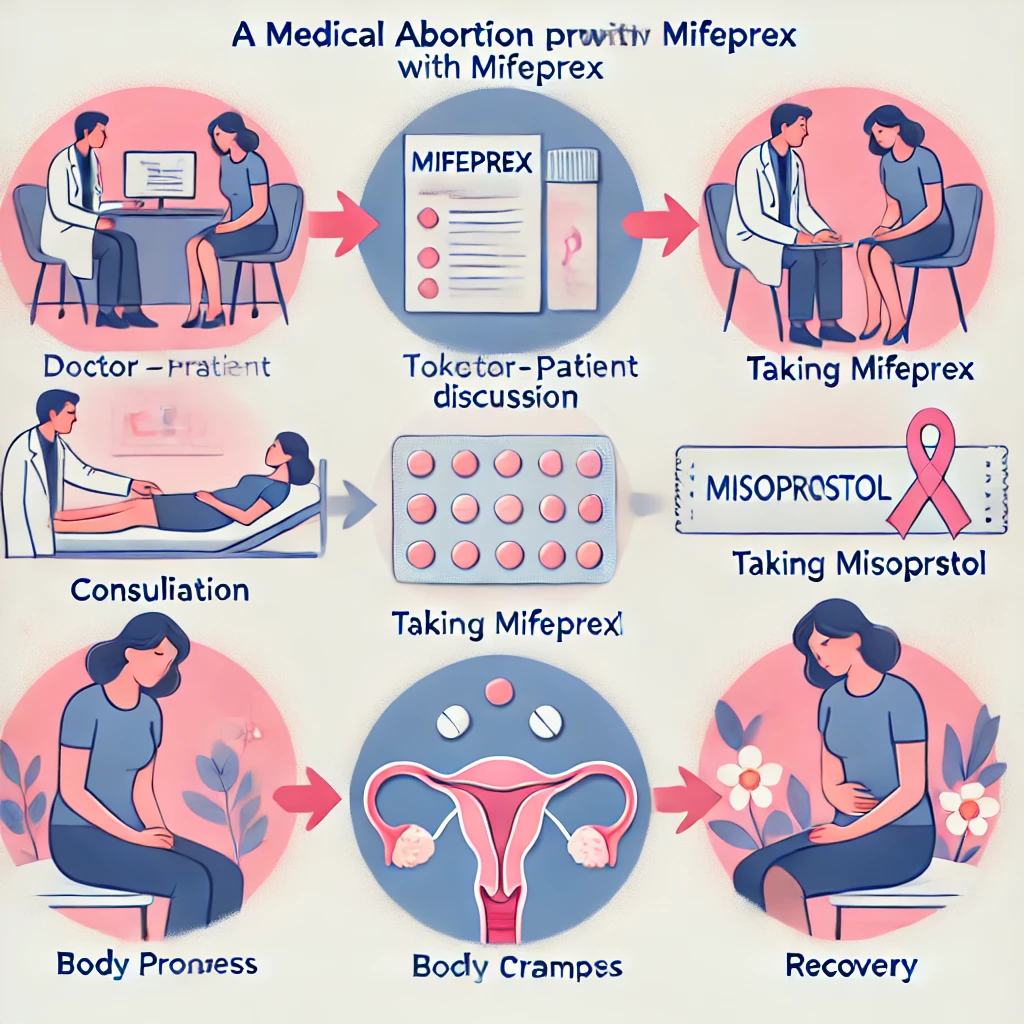Medical abortion is a safe and effective way to terminate an early pregnancy, especially with the help of medications like Mifeprex (mifepristone). Whether you’re considering this option or preparing for the procedure, understanding each stage can help you feel more informed and confident. In this step-by-step guide, we’ll walk you through what to expect during a Mifeprex medical abortion, from the initial consultation to recovery and aftercare.
Step 1: Initial Consultation
Before proceeding with a medical abortion using Mifeprex, the first step is to consult with a healthcare provider. This consultation is crucial to ensure that you are eligible for a medical abortion and that it is the safest option for you.
During the consultation, the healthcare provider will:
- Confirm the pregnancy through an ultrasound or blood test.
- Determine how far along the pregnancy is (Mifeprex is typically used up to 10 weeks of gestation).
- Review your medical history to rule out any contraindications, such as ectopic pregnancy or certain medical conditions.
- Discuss the procedure, potential risks, side effects, and aftercare.
- Once everything is reviewed and approved, you’ll be given the first dose of Mifeprex, which will begin the abortion process.
Step 2: Taking Mifeprex (Mifepristone)
Mifeprex, also known as mifepristone, is the first medication you’ll take in the medical abortion process. This pill works by blocking the hormone progesterone, which is necessary to sustain pregnancy. Without progesterone, the lining of the uterus thins, and the pregnancy cannot continue to grow.
After taking Mifeprex, some women may experience mild symptoms such as cramping or light bleeding, but most don’t feel significant effects at this stage. It’s essential to follow your healthcare provider’s instructions closely and be prepared for the next step of the process.
Step 3: Taking Misoprostol (24 to 48 Hours Later)
After taking Mifeprex, you will be instructed to take a second medication called misoprostol within 24 to 48 hours. Misoprostol causes the uterus to contract, expelling the pregnancy tissue. This is the most physically intense part of the process, as it mimics the effects of a miscarriage.
Within a few hours of taking misoprostol, you can expect:
- Heavy cramping (similar to strong menstrual cramps).
- Heavy bleeding with clots as the uterus empties.
- Nausea, vomiting, diarrhea, and chills are also common side effects.
- These symptoms usually begin within 1-4 hours of taking misoprostol and may last several hours. It is recommended to have pain relief options available, such as ibuprofen, and to stay in a comfortable space where you can rest.
Step 4: Post-Procedure Monitoring
After the intense phase of cramping and bleeding, the symptoms will gradually subside over the next few days. Light bleeding or spotting may continue for up to two weeks, which is entirely normal.
It is important to have a follow-up appointment with your healthcare provider about one to two weeks after the procedure. This ensures that the abortion was complete and that there are no complications. In some cases, an ultrasound or blood test may be performed to confirm that the pregnancy has been fully terminated.
If you experience heavy bleeding that soaks through two pads per hour for more than two hours, or if you have severe pain or fever, contact your healthcare provider immediately.
Step 5: Recovery and Aftercare Tips
Recovery from a Mifeprex medical abortion usually takes about 1-2 weeks. Here are some aftercare tips to ensure a smooth recovery:
- Rest: Your body will need time to heal, so make sure you rest and avoid strenuous activities for at least a few days.
- Monitor Symptoms: Keep an eye on any unusual symptoms like prolonged heavy bleeding, fever, or severe pain, and contact your doctor if necessary.
- Hygiene: Avoid using tampons, douching, or having intercourse until your healthcare provider gives you the all-clear, usually after the bleeding stops.
- Emotional Well-being: It’s normal to experience a range of emotions after a medical abortion. If you’re struggling emotionally, don’t hesitate to seek support from a counselor, support group, or trusted friends and family.
- Additionally, discuss future birth control options with your healthcare provider during your follow-up appointment if you wish to prevent future pregnancies.
Conclusion
A Mifeprex medical abortion is a safe and effective method for terminating an early pregnancy, with a process that typically spans about one to two weeks. By understanding the step-by-step procedure—from consultation to recovery—you can feel more prepared and in control.
If you’re considering this option and want to buy Mifeprex online, ensure you choose a reputable source. Always consult with a medical professional to guide you through the process and help you make informed decisions regarding your health. Remember, taking the time to follow proper aftercare and monitoring your body’s recovery is crucial for a safe and healthy experience.

